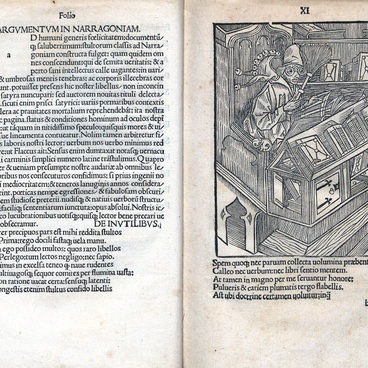The full name of this work is ‘Poliphilo’s Strife of Love in a Dream, in Which It Is Shown That All Human Things Are but a Dream, and Many Other Things Worthy of Knowledge and Memory’ (Poliphili Hypnerotomachia, ubi humana omnia non nisi somnium esse docet, atque obiter plurima scitu sane quam digna commemorat).
1 / 9
#1
Francesco Colonna
Hypnerotomachia Poliphili
#2
#3
Published anonymously, the romance, better known as “Hypnerotomachia Poliphili”, is an outstanding monument of printing art. This is one of the few illustrated publications of the printing house of Aldus Manutius, the largest and most famous in Venice. It contains 171 woodcuts. The quality of the illustrations is so high that their authorship has been tried to be attributed to the largest artists: Bellini, Mantegna and even young Raphael. However, the engraver and the draftsman are still anonymous. The Hypnerotomachia is a sample of the printed book design (a new one), which breaks with the handwritten tradition.
#7
Poliphilo in the forest
#4
The text of the book is extraordinarily complex: written in a mixture of Latin and modern Italian, it goes back to the genre of chivalric romance, like The Romance of the Rose, and is full of ancient allusions. Its plot is a story about the visions of Poliphilo yearning for his beloved Polia, which weaves together dream and reality, poetry and philosophy, allegory and eroticism.
#5
Riddles and ciphers start from the title: back in the 16th century, it was noticed that the initials of the 38 chapters of the book made up the phrase POLIAM FRATER FRANCICUS COLUMNA PERAMAVIT [Polia’s brother Francesco Colonna with great love], on the basis of which the text was attributed to the Italian humanist Francesco Colonna.
#6
The illustrations are closely connected with the text, representing fantastic scenes, in which mythological figures coexist with the characters dressed in modern clothing.
The text was printed in the antiqua type created by Francesco Griffo. This type has become a classic of printing art.
The layout is extremely artistic, with varying typesetting on different pages shaping a ‘bowl’, ‘kerchief’, ‘ship’, ‘vase’.
The text was printed in the antiqua type created by Francesco Griffo. This type has become a classic of printing art.
The layout is extremely artistic, with varying typesetting on different pages shaping a ‘bowl’, ‘kerchief’, ‘ship’, ‘vase’.
read morehide
6
Open in app
Share











